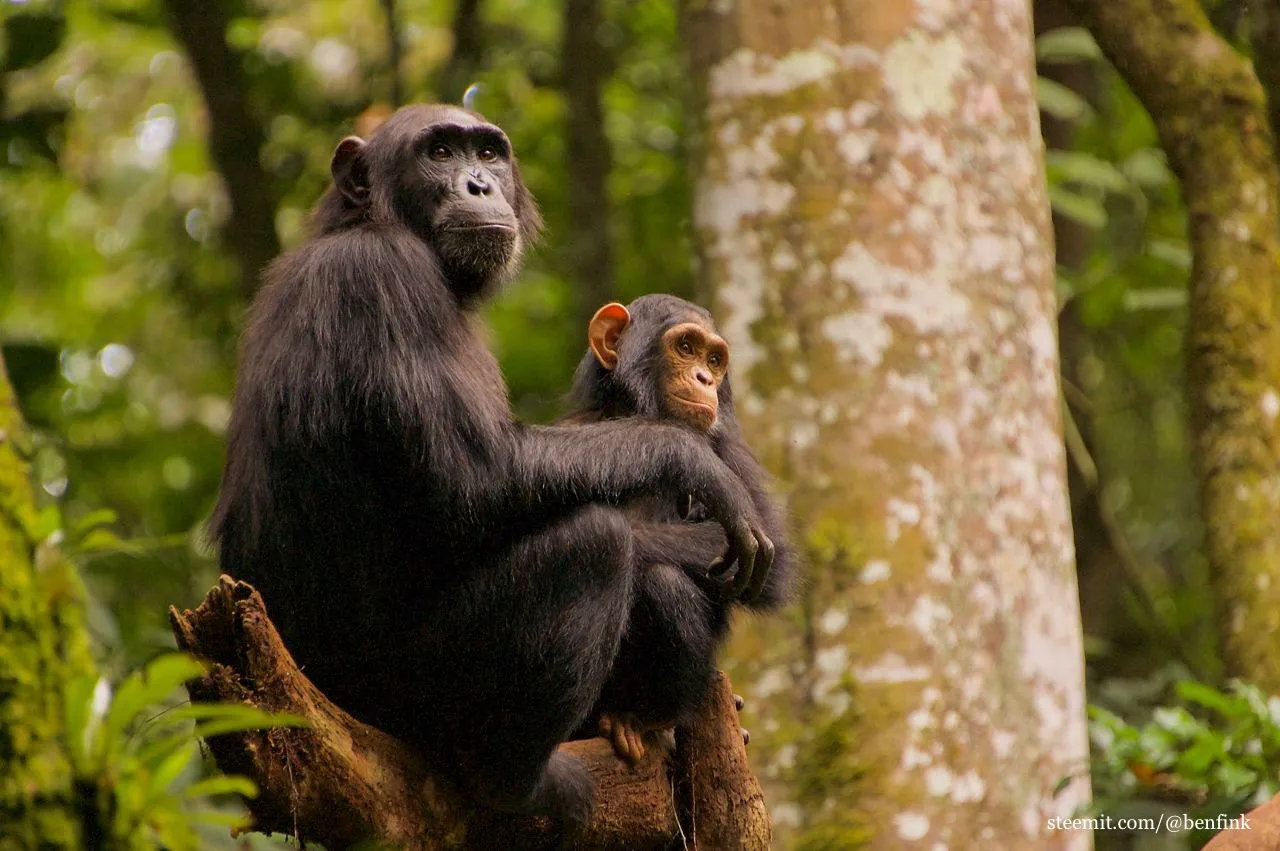Greetings from Kibale National Park, Uganda! I’m a researcher studying the lives of chimpanzees (my introduceyourself). Specifically, I follow the Ngogo chimps, a huge community of about 200 individuals that scientists have studied for over 22 years. I am here working on my doctorate, beginning a new study on foraging strategies and aging.
Celebrity selfie: researcher stops for pic with Ngogo alpha, Jackson. The face mask is to keep the chimps safe from our diseases!
Posting from the forest, I want to share with steemit the complex lives of these intelligent animals, how chimp science works, and the daily adventure (and sometimes boredom) of fieldwork. I’ll post when the internet connection and the chimpanzees’ schedule allows it.
Like I mentioned, Ngogo is big. It’s community of individuals who each have their own personality and relationships. Chimpanzees, like most primates, are social and will often spend their days around others. However, a chimp community is never all in the same place, you won’t see all 200 chimps at once. Individuals can choose to form these sub-groups, known as parties, with potential mates, friends, relatives or others. Together they travel, forage, and groom, but these parties are temporary. They form and reform all the time.
A party of the westerners. Researchers learn to ID chimpanzees from face, fur color, posture, associations, and more
As a researcher, you must be able to identify all the chimpanzees. Knowing them as individuals is the only way to understand their social lives, all the feuds and friendships, or consistently follow a chimp of interest. Just like humans, chimpanzee faces are distinct. Still, it takes time and patience to learn them all. This is my second time at Ngogo and I am still meeting new individuals nearly every day. Folks here say it often takes about two months to be comfortable with IDing.
Chimpanzee flashcards, collect ‘em all
Researchers must also learn the forest. The Ngogo territory stretches over roughly six square kilometers, which can be tricky to navigate. If you can’t find the chimps quickly in the morning when they are noisy, your day might go to waste. Meanwhile, keep an eye out for other wildlife. On my first day back and in the darkness of early morning, an elephant ran across the trail in front of us, trumpeting in surprise (ours too). We realized we were surrounded, approaching elephants crashing through vegetation on all sides. The only solution was to silently wait for them to pass, crouched between a tree’s giant buttresses. After that kind of a morning, it can feel relaxing to just be around the chimps.
The Ngogo trail system helps us find and follow the chimpanzees as well as keep track of their location
I’ll do my best to answer questions from Steemit while in the field. Internet and time is limited, but I plan to make more post and updates on my work.
Follow for more chimpy sciencey goodness @benfink.
100% of my steem wallet goes directly to chimpanzee research and conservation
Learn more about and consider donating to support the study and conservation of the Ngogo Chimpanzees
ngogochimpanzeeproject.org | facebook
